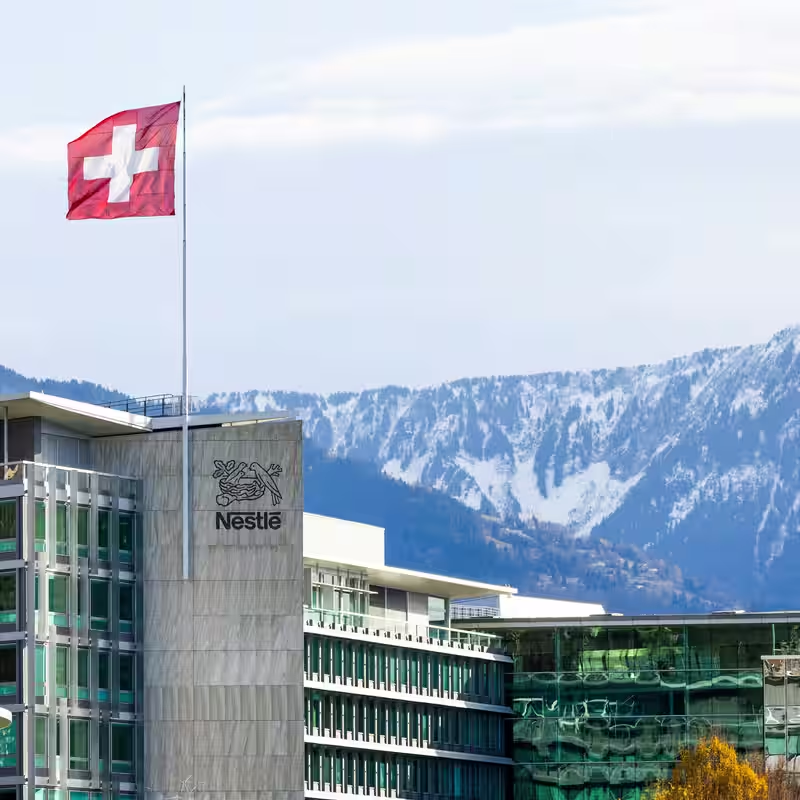Table of Contents
- Nestlé Announces Massive Global Job Cuts
- New CEO Philipp Navratil’s Turnaround Strategy
- Who’s Affected—and Where?
- Investors Cheer, Workers Worry
- Trade Tariffs, China Slump, and Leadership Turmoil
- Sources
Nestlé Job Cuts: 16,000 Positions Slashed in Global Restructuring
In a sweeping move to revive its struggling operations, Nestlé—the world’s largest food and beverage company—announced on October 16, 2025, that it will eliminate approximately 16,000 jobs over the next two years. The decision, part of an accelerated cost-cutting initiative, marks one of the most significant workforce reductions in the Swiss giant’s recent history.
The job cuts come just six weeks after the abrupt ousting of former CEO Laurent Freixe and the appointment of Philipp Navratil, a longtime Nestlé insider, as his replacement. Navratil wasted no time in signaling a new direction: “The world is changing, and Nestlé needs to change faster,” he said in a public statement. “This will include making hard but necessary decisions.”
A Bold New Plan: $3.7 Billion in Cuts by 2027
Under Navratil’s leadership, Nestlé is now targeting CHF 3 billion ($3.7 billion) in cost reductions by 2027—up from a previous goal of CHF 2.5 billion. The plan hinges on two key pillars: increased automation and the consolidation of shared services across business units.
While the company insists these measures will “enhance efficiency without compromising product quality,” the human toll is undeniable. Of the 16,000 roles being eliminated, 12,000 are white-collar positions—spanning corporate offices, supply chain management, and administrative functions across North America, Europe, and Asia.
Global Reach, Local Pain
Nestlé employs roughly 277,000 people worldwide and owns over 2,000 brands—including household names like Nespresso, KitKat, Purina, Perrier, and Toll House. The layoffs will be felt across its global footprint, though the company has not yet disclosed country-specific breakdowns.
Labor unions in Switzerland and Germany have already voiced concern. “These aren’t just numbers—they’re families, careers, and communities,” said Martina Weber of the Swiss Trade Union Federation. “Nestlé must ensure fair severance and retraining support.”
Stock Soars as Investors Applaud Austerity
Despite the human cost, financial markets reacted positively. Nestlé’s shares jumped more than 8% on the Zurich Stock Exchange following the announcement—a clear signal that investors are betting on Navratil’s aggressive restructuring to reignite growth.
The company reported a 4.3% year-over-year sales increase in Q3 2025, driven by higher pricing and volume gains. Nestlé has maintained its full-year 2025 outlook, projecting improved sales despite headwinds from currency fluctuations and U.S. trade policy.
Mounting Pressures Behind the Cuts
Several external and internal factors pushed Nestlé toward this drastic pivot:
- Slumping demand in China—once a high-growth market—has stalled revenue.
- U.S. tariffs: Former President Trump’s 39% levy on Swiss imports continues to squeeze margins in Nestlé’s largest market.
- Leadership chaos: The sudden exit of CEO Laurent Freixe over a “breach of conduct” and the subsequent resignation of Chairman Paul Bulcke created instability at the top.
With Pablo Isla—former head of Zara’s parent company Inditex—now serving as chairman, Nestlé appears to be modeling its turnaround after retail-sector transformations.
As the company enters a new era, one question remains: Can efficiency replace empathy in the eyes of both consumers and employees?




